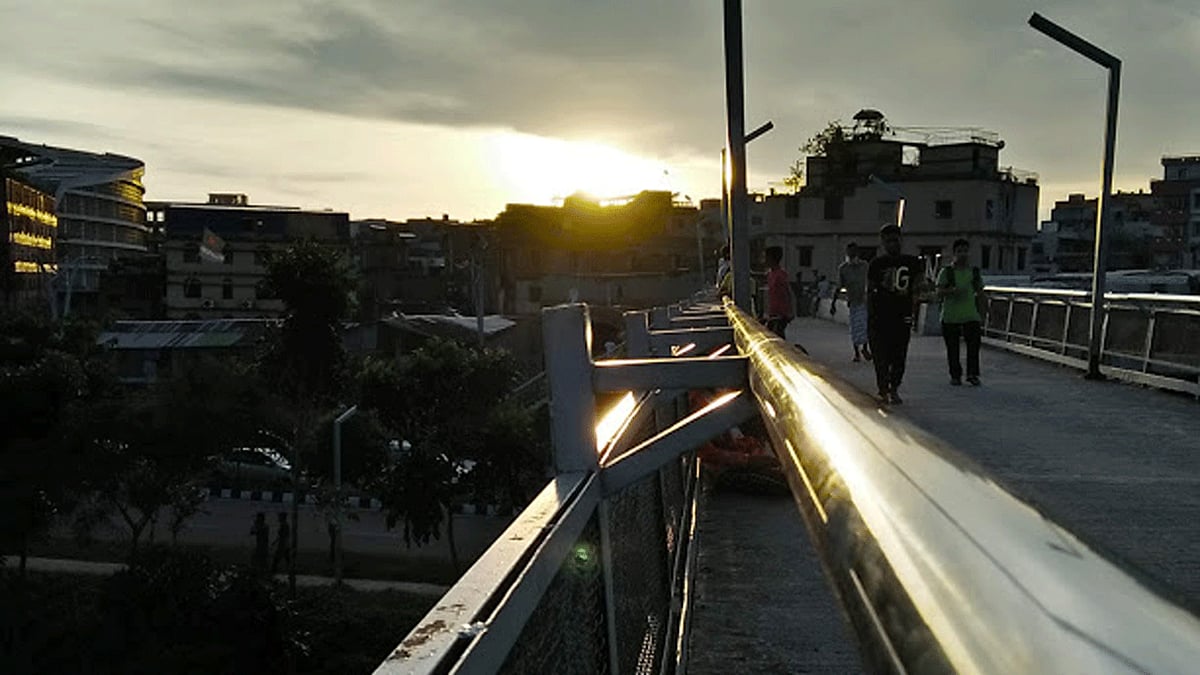
Dhaka witnessed a record 122 millimetre rainfall in just six hours on 21 September, leaving many parts of the city waterlogged for hours and with some places going under waist-deep water.
Urban planners said faults in Dhaka’s water drainage system contributed to such a situation.
There are many water drainage routes in Dhaka and the Hatirjheel-Begunbari area is one of the major water drainage routes.
Researchers found more than 90 per cent of the Hatirjheel-Begunbari area is likely to be covered by structures within 2040 and water drainage will become difficult through the remaining places, which is less than 10 per cent.
Experts conducted research on the present and future condition of the Hatirjheel-Begunbari area covering about 71 sq km.
Professor of civil engineering at United International University, Md Mujibur Rahman led the research titled “The Need for Transformative Change in Dhaka's Stormwater Drainage System: Green Infrastructure and Nature-Based Approaches for Sustainable Solutions,” which will be presented at a seminar in Dhaka today, Tuesday.
About the objective of the research, water expert and former professor of Bangladesh University of Engineering and Technology (BUET) Mujibur Rahman said, “The Hatirjheel-Begunbari area is one of the seven important water drainage routes in the capital. It is also apparently the largest area. Our research highlighted what situation may arise in future as structures are being built at such a rate, and if it is not prevented and not done in a planned way.”
And if such a situation arises water drainage will become difficult and spending will increase massively, he said adding that this route of the capital’s seven water drainage routes is in danger now.
According to the research findings, approximately 69 per cent of the Hajitjheel-Begunbari area has been covered by houses and other structures, and that may increase to 71 per cent in 2025 and over 90 per cent within 2040, while shares of water bodies may decrease to about 3.5 per cent and open spaces to approximately 6 per cent by 2040.
Researchers analysed satellite images of the Hajitjheel-Begunbari area from 1989, 1999 and 2009, as well as the 2013 digital map of the land use to highlight the situation that may arise in 2040, professor Mujibur Rahman said.
There are six more water drainage routes in the capital. These are the Kallayanpur canal and its adjacent area, Goran Chatbari area, Boalia canal, Shajadpur-Dumni canal, Sutivola-Begunbari-Norai canal, Segunbagicha-Zirani-Bsabo and Manda canal.
Urban planner Iqbal Habib, who is the joint secretary of urbanisation and city governance of Bangladesh Poribesh Andolon (BAPA), thinks the actual area covered by structures in the Hajitjheel-Begunbari area is less than area cited in the research. He said there are makeshift structures in a significant portion of this area and the RAJUK (Rajdhani Unnayan Kartripakkha) has been active to remove these structures recently.
He said, “A special detailed area plan (DAP) will be implemented for this area and major change may happen. So, what has been projected in the research may not be the same in reality.”
Professor Adil Mohammed Khan, who is the executive director of the Institute for Planning and Development (IPD), is involved with several researches on drainage systems in Dhaka. He thinks the research has projected the reality.
He said, “The urban plan that a complex area like Dhaka city requires does not exist, and the plan that exists is an uncontrolled and unwise one. This is the reason the water drainage system does not become effective at all.”
About the ongoing development experience of the Hatirjheel-Begunbari area, Adil Mohammed Khan said development is happening here for group or individual interests not for overall interests. As a result, the area covered by structures is on the rise and will continue to rise, he added.
This report appeared in the online edition of Prothom Alo and has been rewritten in English by Hasanul Banna